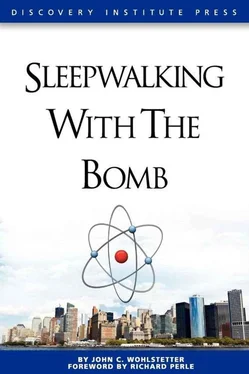Ultimately Johnson decided not to run again, but in any case, his warm support for Israel went beyond politics to religious identity. LBJ was a Christadelphian; the sect believes that the Kingdom of God will be seated on Earth in Jerusalem. LBJ also forged a warm bond with fellow farmer Levi Eshkol, Israel’s Prime Minister.
Indeed, in September 1970 Jordan’s King Hussein (whose son Abdullah now rules the kingdom) decided to end Palestinian unrest inside Jordan by driving the Palestinian Liberation Organization military units out of the West Bank and into Lebanon. Jordan’s British-trained army slaughtered thousands of PLO fighters and West Bank civilians. One of the terrorist groups took the name “Black September” after the debacle. The world stood mute. Israel warned off Syria and Iraq.
Note that in the decades before Suez, Britain and France had combined to give the Mideast the grim gift of the Grand Mufti. In 1922, early in its 30-year Palestine Mandate, Britain revived the office of Grand Mufti of Jerusalem. The apointee, Amin el-Husseini proved a vile anti-Semitic demagogue who conspired with Hitler to kill Jews. The French held him as a war criminal at war’s end, but in 1946 let him escape to Egypt, and he fomented hatred of Jews and preached radical politics until his death, at age 80, in 1974.
The Hiroshima bomb was originally dubbed “Thin Man” after the Dashiell Hammett fictional detective, while “Fat Man” was the nickname of the Caspar Gutman character played by Sydney Greenstreet in the film of Hammett’s novel The Maltese Falcon ; Thin Man was shortened and then renamed Little Boy.
Because Fat Man missed its aim point by over two miles the death toll was about half that for Hiroshima. This dramatically taught the first nuclear-age targeting lesson: accuracy is a greater factor in a nuclear weapon’s overall destructiveness than is yield. It is for that precise reason that as missiles became far more accurate their warhead yields even more dramatically declined.
Manhattan Project physicist Hans Bethe opined at the time that the Soviets must have begun their extensive preparations by March 1961, just as the Geneva test ban talks resumed. Half a year before they announced it, the Soviets already had begun planning to end their moratorium.
A rule of thumb for blast effect: each ton of nuclear yield vaporizes one ton of debris at ground level. Because the Tsar Bomba’s 50-megaton blast was an airburst, but too low, it vaporized earth at ground zero. A pure ground-level Tsar Bomba burst would have thrown skyward 50 million tons of debris. (The U.S. Air Force nixed a Strategic Air Command request for a 60-megaton H-bomb; in the event, President Eisenhower refused to allow an atmospheric test in the Pacific.)
Far-flung radiation effects began with the 1945 Trinity test, which transmuted cerium-140 (a stable rare-earth element of the soil in the western continental U.S.) into intensely radioactive cerium-141. Winds carried it across the United States, where it ruined film at the Eastman Kodak factory in Rochester, New York. Another odd example: on May 25, 1953, a shell from the Army’s atomic cannon exploded in the Nevada desert with a 15-kiloton yield (slightly greater than the Hiroshima bomb), sending a radioactive cloud east that contaminated hail falling in a thunderstorm over Washington, D.C.
Paul Nitze points out that the Soviets gathered more detailed information than did the U.S. on atmospheric tests and by signing the treaty locked in a knowledge edge.
Through January 2012, 182 countries had signed and 156 had ratified the treaty. It will enter into force once 44 nuclear-energy countries that helped negotiate have ratified it. Eight countries remain on this list: China, Egypt, India, Iran, Israel, North Korea, Pakistan, and the U.S. The U.S. has signed, but not ratified, the treaty.
Two other notable nuclear-free-zone treaties are the Treaty of Rarotonga covering the South Pacific, which came into force in 1986; and the African Nuclear-Free Weapon Zone Treaty, which came into force in 2009.
Argentina did not accede to the treaty until 1994, which meant that in the spring of 1982, during the Falklands War with Britain, the Argentines had no legal grounds to object to Britain’s using nuclear submarines or other nuclear-armed platforms during the conflict. On May 2, 1982, the UK nuclear submarine Conqueror sank the Argentine cruiser General Belgrano , causing the largest loss of life (323 of 993 on board) during the war. As Argentina still claims the Falkland Islands, located in the southern Atlantic Ocean about 300 miles off its eastern coast, in event of a future conflict Britain would be violating the Tlatelolco Protocols if it sent nuclear-powered, let alone, nuclear-armed, ships into the conflict. In February 2012 Britain sent a nuclear sub to the area; Argentina claimed this violated the protocols; Britain denied the charge but refused to reveal the sub’s location.
For more on the detective work that found Israel the likely candidate responsible for the test, see source notes at www.SleepwalkBomb.com. Reed and Stillman argue that the Carter administration—to avoid roiling the political climate in the Mideast after the Camp David Accords between Israel and Egypt were signed in 1978—whitewashed the 1979 nuclear test event and produced a finding of no nuclear test.
The 1953 armistice merely withdrew forces 2,000 meters (2,200 yards, 1¼ miles) from the 1953 front lines. Since 1953, North Korea has repeatedly violated the border, sometime even killing military personnel working in the demilitarized Joint Security Area (JSA), a four-kilometer-wide zone with one half in each Korea; the 38th parallel literally bisects the conference table within the JSA that is used for negotiations.
Some countries claim a 200-mile limit to territorial waters, but such claims are not currently recognized under international law.
Albert Wohlstetter was instrumental in conceiving the “fail-safe” protocol. Perhaps due to the film and its notoriety, it later was renamed “positive control.”
Anything less than a thousand miles above Earth is “low” for a satellite, whereas a hundredth of that is high for a plane. Spy planes like the U-2 (and its faster-flying successor, the SR-71 Blackbird, which could cruise at 85,000 feet, or 16 miles above earth) are among the highest-flying manned non-rocket aircraft. The SR-71 was retired in the 1990s.
The Russians had first deployed 64 “Galosh” ABMs around Moscow in 1972.












